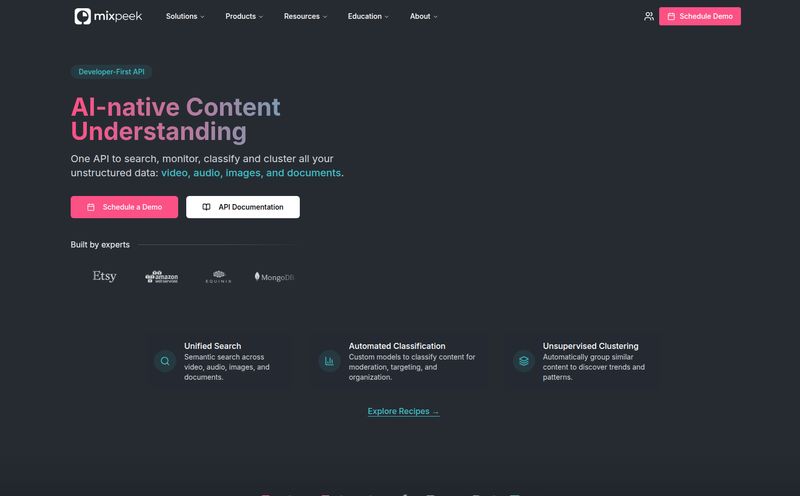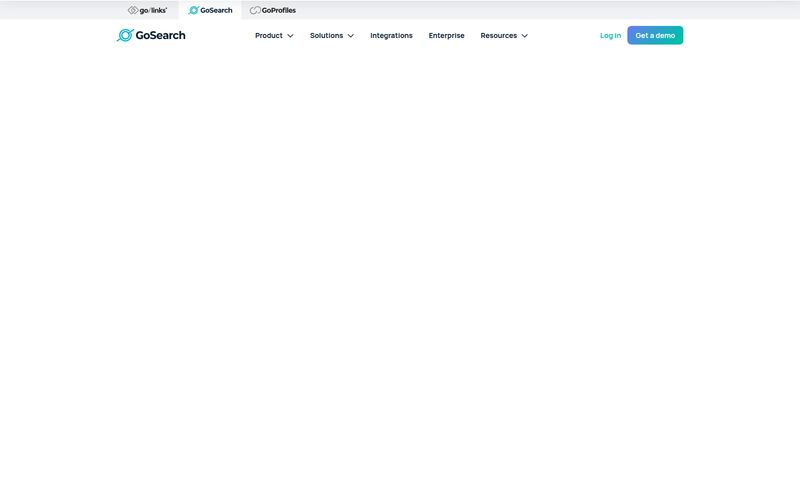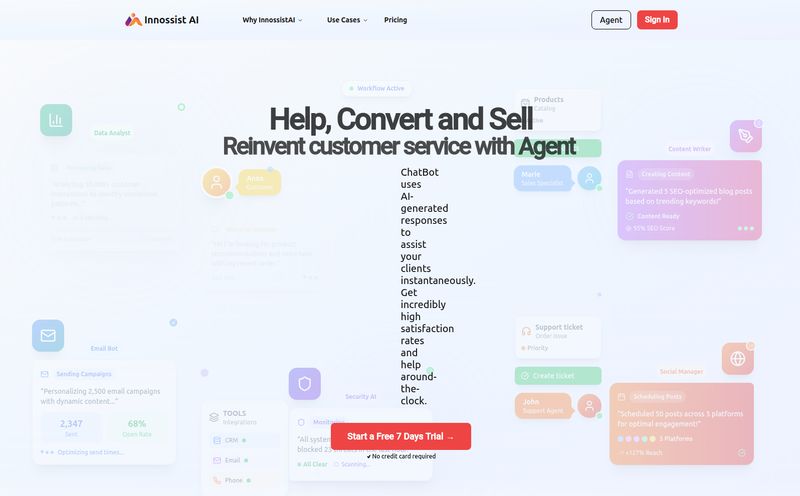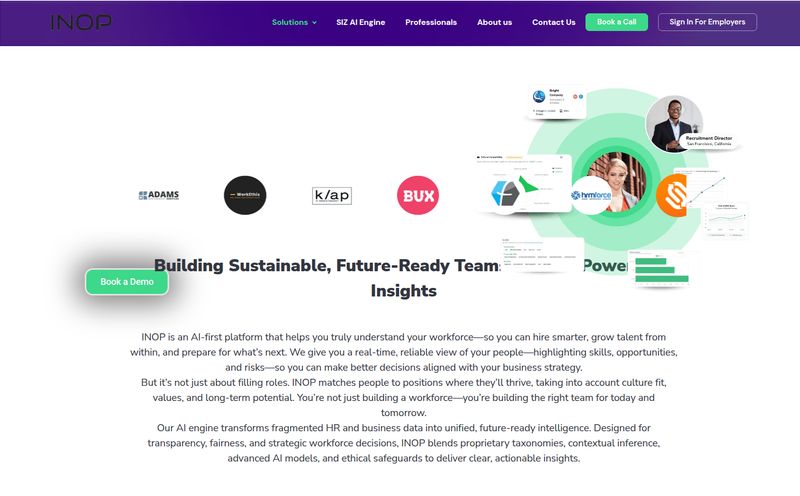If you’ve worked in marketing, data science, or engineering for more than a week, you've felt the pain. The absolute, hair-pulling frustration of data that just won't... talk to each other. Your CRM has one piece of the puzzle, your ad platform has another, and your production database holds the keys to the kingdom. Getting them all to sit at the same table has traditionally been a nightmare of brittle custom scripts, expensive middleware, or just giving up and living with siloed information.
I’ve spent more nights than I care to admit wrestling with a broken API connection or a Python script that failed because of a minor, unannounced change. So when a tool comes along that claims to be the “open standard in data movement,” my ears perk up. But my skepticism meter goes way up, too.
The tool in question is Airbyte. And I’ve been digging into it. The short version? It’s pretty damn impressive. But it’s not a magic wand. Let’s get into it.
So, What is Airbyte, Really?
At its core, Airbyte is an open-source data integration platform. Think of it as a universal translator for your data. Its main job is to pull data from a source (like Salesforce, Google Ads, or a PostgreSQL database) and load it into a destination (like a data warehouse like Snowflake, BigQuery, or just a simple data lake). This process is known in the biz as ELT—Extract, Load, Transform.
Unlike older ETL tools, Airbyte focuses on getting the raw data moved first. The transformation—the cleaning, organizing, and modeling—happens later, typically inside the data warehouse with a tool like dbt. This approach is way more flexible and has become the go-to for modern data stacks.
But the real headline here is open-source. That changes the entire conversation from “How much will this cost me?” to “What can I build with this?”

Visit Airbyte
The Connector Library is Kinda Nuts
Okay, this is where Airbyte really starts to shine. The biggest bottleneck in data integration is always the connectors. Every new SaaS tool your marketing team signs up for, every new database your dev team spins up, needs a new connection. Building these from scratch is tedious and brittle work.
Airbyte boasts a massive, and I mean massive, catalog of pre-built connectors. We’re talking hundreds. From the big players like HubSpot and Stripe to more niche tools you might be using. This isn't just a convenience; it's a strategic advantage. It means your engineers can stop being full-time plumbers and focus on building things that actually generate revenue.
And because it’s open-source, if you find a source that isn’t supported? You can build a connector for it yourself using their Connector Development Kit (CDK). That's a level of control you just dont get with most closed-source competitors. It turns a potential dead-end into a weekend project.
How You Can Wield Airbyte's Power
It's not just about having a bunch of connectors. It's about how you can use them. Airbyte is surprisingly flexible in its architecture and what it empowers you to do.
It's Ready for the AI Gold Rush
You can't read a tech blog these days without tripping over the terms 'AI' or 'LLM'. Airbyte has smartly leaned into this. The platform is designed to be a crucial first step in any AI/ML pipeline, helping you pull and consolidate the unstructured data from various sources needed to feed large language models or build out vector databases. Being able to easily funnel data from Notion, Slack, and your internal docs into a unified place for an AI to process is a very powerful proposition right now.
Deployment Your Way: The Big Decision
This is a critical point. Airbyte gives you options, and the one you choose will have a big impact on your cost and workload. You can go with Airbyte Cloud, where they handle all the infrastructure and you just… use the tool. It's the easy button. Or, you can self-host the open-source version on your own servers (or private cloud). This gives you maximum control, security, and privacy, but it also means you’re on the hook for setup, maintenance, and scaling. There's no right answer, it completely depends on your team's technical chops and your company's security posture.
Let's Talk Money: Breaking Down Airbyte's Pricing
Pricing is often a black box with data tools. I appreciate that Airbyte is pretty transparent about it. They essentially have four tiers that cater to different needs, and you can see a great comparison on their pricing page.
| Plan | Best For | Pricing Model | Key Takeaway |
|---|---|---|---|
| Open Source | Practitioners, Startups, DIY-ers | Free Forever | All the power, but you manage the infrastructure. Requires technical skills (think Docker). |
| Cloud | Individuals & Teams wanting managed service | Volume-based | Pay for what you use (based on data volume). No server headaches. Great for getting started. |
| Team | Growing Organizations | Capacity-based | Predictable pricing for larger data volumes, with added governance and security features. |
| Enterprise | Large Companies with strict compliance | Capacity-based | Maximum security and control, often self-hosted but with enterprise-level support and features. |
I love that there's a genuinely free, powerful option. So many 'freemium' tools are just crippled demos. The Airbyte Open Source version is the real deal, which has fostered a huge and active community (over 25,000 members, according to their site). That's your support system right there.
The Good, The Bad, and The Complicated
No tool is perfect. In my experience, it's better to go in with eyes wide open. So here's my unfiltered take.
What I Love About Airbyte
The open-source model is the heart and soul of Airbyte. It fosters trust, transparency, and a vibrant community that constantly improves the product. The sheer breadth of connectors is a massive time-saver, and the ability to build your own is liberating. The flexibility in deployment—Cloud, Self-hosted, Hybrid—means it can fit almost any organization’s needs, from a solo dev's side project to a Fortune 500 company's regulated environment.
Where You Might Stumble
Let's not sugarcoat it: self-hosting the open-source version is not for the faint of heart. If you're not comfortable with Docker, Kubernetes, and managing server infrastructure, you're going to have a bad time. That's the trade-off for 'free'. Secondly, while the paid plans offer predictability, the volume-based Cloud plan could lead to surprise bills if a data source suddenly starts spitting out way more data than you expected. You have to monitor your usage. Finally, as with any tiered product, some of the really advanced governance and security features are reserved for the top-tier Enterprise plan, which might be out of reach for smaller teams.
So, Should You Use Airbyte?
It all comes down to who you are.
- For the scrappy startup or solo developer: Absolutely. The Open Source version is a gift. It gives you enterprise-grade data integration capabilities for the cost of your time and a server.
- For the growing mid-size company: The Cloud or Team plan is probably your sweet spot. You get the power of the platform without the infrastructure overhead, letting your team focus on data, not servers.
- For the large enterprise: The Enterprise plan is built for you, with the security, compliance (like HIPAA and SOC 2), and support you need to operate at scale.
In short, Airbyte has successfully moved data integration from a niche, expensive problem to an accessible, community-driven one. It’s a powerful piece of the modern data stack puzzle.
Frequently Asked Questions about Airbyte
- Is Airbyte really free?
- Yes, the Airbyte Open Source version is free to use forever. You'll just need to pay for the infrastructure you run it on (your servers or cloud provider). The managed Cloud, Team, and Enterprise versions are paid products.
- How is Airbyte different from Fivetran or Stitch?
- The biggest difference is that Airbyte is fundamentally open-source. This gives it a massive, community-driven library of connectors and allows you to self-host for maximum control. Fivetran and Stitch are closed-source, fully managed services.
- Can I really build my own connectors?
- Yes! Airbyte provides a Connector Development Kit (CDK) that simplifies the process. If you have a niche internal tool or a brand new API you need to pull data from, you're not stuck waiting for someone else to build it.
- Is the self-hosted version difficult to set up?
- Honestly, it can be if you're new to devops concepts. It typically deploys via Docker, so you'll need a working knowledge of that. For large-scale deployments, experience with Kubernetes is recommended. It's powerful, not necessarily easy.
- Does Airbyte also transform the data?
- Airbyte is an ELT (Extract, Load, Transform) tool, not ETL. It focuses on reliably getting the raw data into your destination. It's designed to integrate seamlessly with transformation tools like dbt, which you use to clean, model, and prepare the data after it has been loaded.
- What kind of support is available?
- For the Open Source version, support is primarily through the community via Slack and forums. For the paid Cloud, Team, and Enterprise plans, you get dedicated support from the Airbyte team with varying levels of service.
My Final Word
Look, the data integration space is crowded. New tools pop up all the time. But Airbyte feels different. By building on an open-source foundation, they've created something that feels more like a movement than just a product. It's a platform that empowers users instead of just charging them. It has its complexities, for sure, and it's not a one-click solution for every problem. But for any team serious about building a robust, flexible, and future-proof data stack, ignoring Airbyte would be a huge mistake. It’s earned its place at the table.



